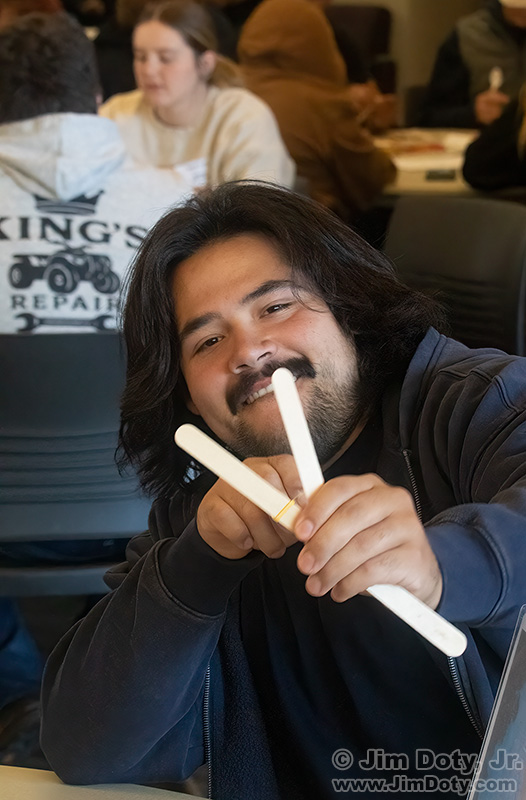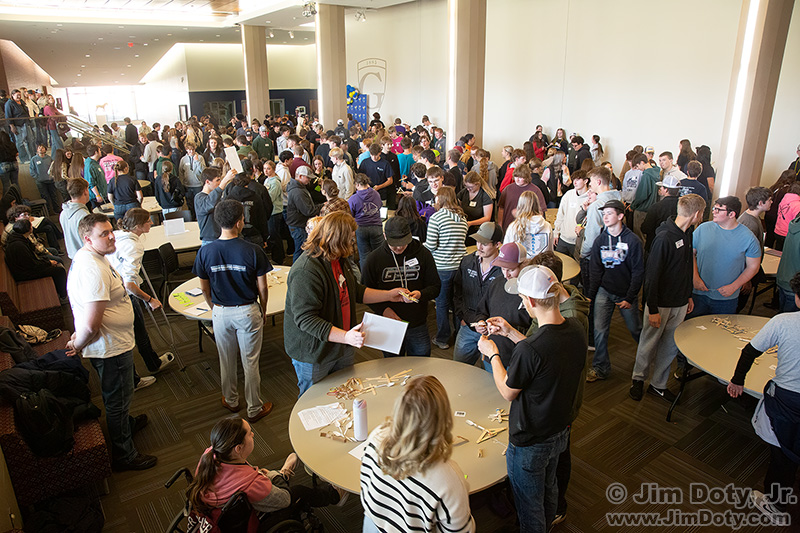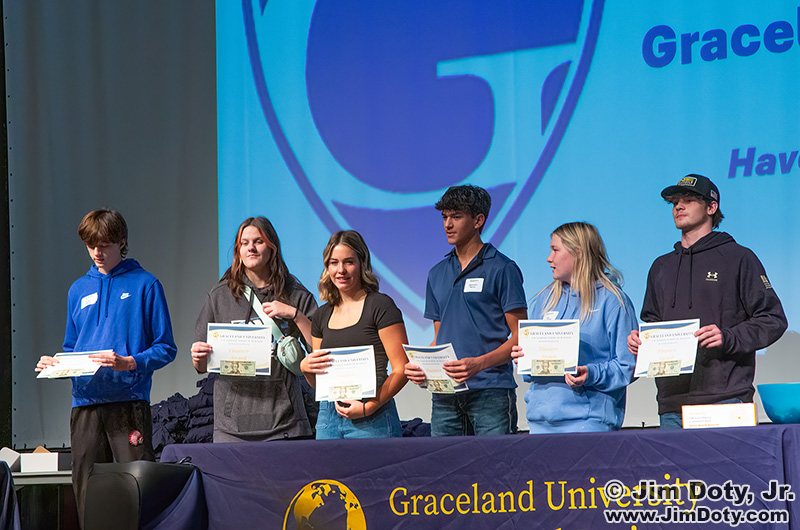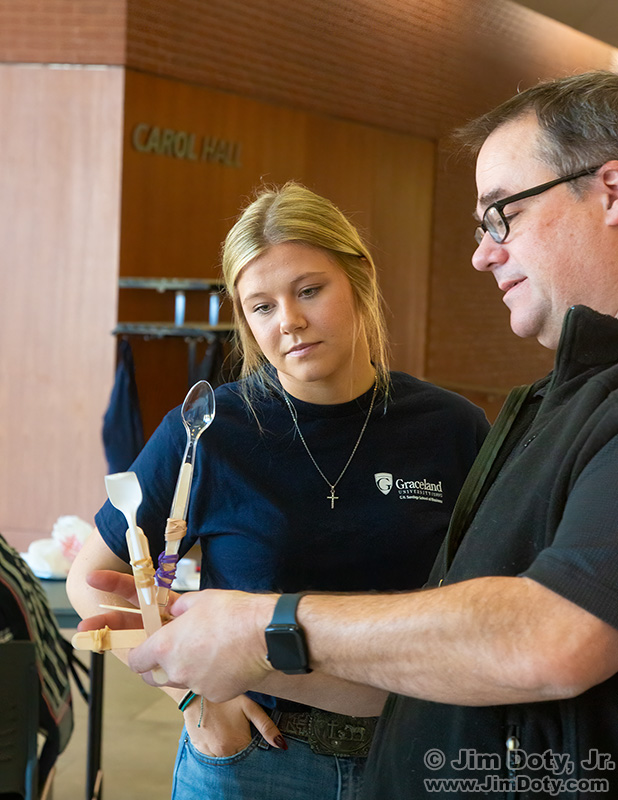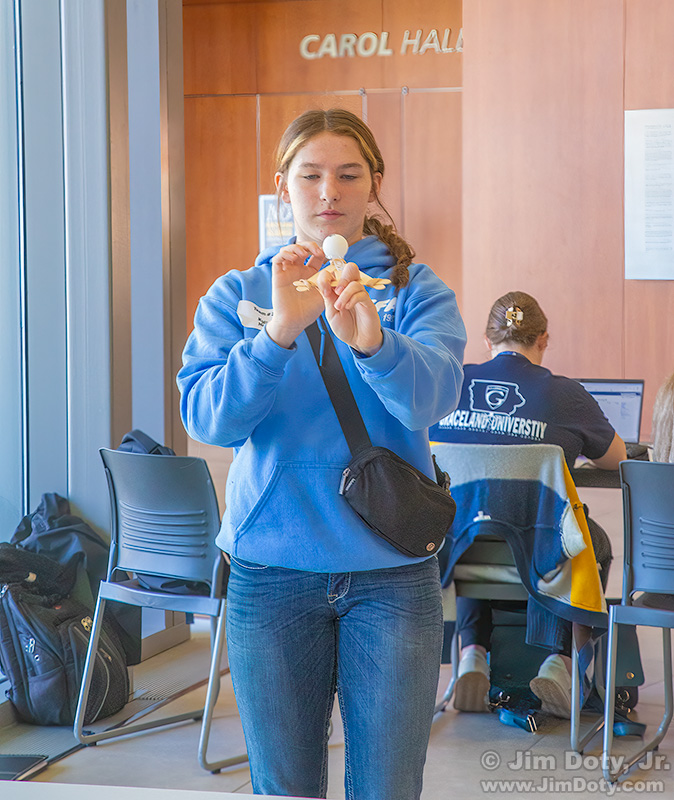In a prior article I shared 11 photos from a project for Graceland University. I was in the process of choosing selects. Years ago a photo editor said, “Take lots of photos and send me the very best.” Most editors don’t want to go through all of your images. It is the photographers job to go through the photos from an event and choose the best images for the editor. They are called “selects”. The editor goes through the selection and makes the final choices as to which image or images will be published.
The number of selects depends on the editor and the project. For some events the local newspaper editor wants me to send in 6-9 photos and she picks 2 or 3 to go into the paper. But one year at Halloween she wanted 20 or more images so she could print a whole collage of images.
For this event Graceland wanted 20 or more images for various uses now and in the future. My job was to take lots of pictures, and especially photos of the team leaders. Some of these images are more like portraits, but in many of these images there is some action going on related to the event.
For 4 hours, the length of the event competition, I wandered around the room and took pictures. I tried to get several photos of each team leader so I could pick the best image when I made the final selection.
After the event competition there was an awards ceremony. Before the awards ceremony, I pre-metered for the stage lighting and I set the white in the camera to tungsten to minimize any yellow color cast from the tungsten lights. I was ready to go for the speakers and the awards ceremony when the winning teams were announced.
I use two camera bodies for an event like this. One hangs around my neck and the other off my shoulder. One camera has a 24-105mm lens and the other has a 70-300mm lens. That way I am ready for anything. Using one camera and switching lenses is inefficient. You can miss some great shots while you are changing lenses. If am I shooting someone nearby with the 24-105mm lens, and something happens across the room, I can quickly grab the camera with the 70-300mm lens and get the shot.
I ended up creating 183 photos with the 24-105mm lens and 102 photos with the 70-300mm. The ratio varies with the event. At some events I take a higher percentage of photos with the 70-300mm lens.
Using Adobe Bridge, I quickly went through all 285 photos and made my first selection. Any photo that caught my eye or jumped out at me received one star. I hid all of the photos that didn’t have a star and went through again. This time I went through more slowly. For my second selection I changed my choices from one star to three stars. I ended up with about 20 photos.
Then I walked away for a couple of days and ignored the photos. It helps to take some time away from the photos before going through them again. I learned that from National Geographic photographer Dewitt Jones. For his personal projects he might walk away from the images for a week or more and then go back at look at them again. You usually find a treasure that you ignored the first time.
For newspaper work I don’t have the luxury of doing that. I download the photos, go through them once to pick the best and send them off to the paper before the 5 pm deadline.
After a two day break I went through the one and two star photos again. Some one star photos moved up to three stars, and some three stars photos lost all of their stars. Now I was at 24 selects.
Then I went back and looked at every photo one more time. Some photos with no stars or one star became three star photos. Some photos dropped in their rating. My final group of selects (screen capture above has 30 photos that will go to Graceland University.
Early on in this whole process I had to do a quick pick of 6 photos to meet the newspaper deadline. But it was a real luxury to live with the photos for several days before making my final selection of photos to send to Graceland. Dewitt Jones is right. You need to both live with and ignore your photos for a while before you make your best selection.
Link
Graceland University Sponsors “Ag, FFA, and Business Simulation” for High School Students

